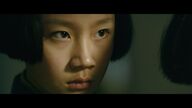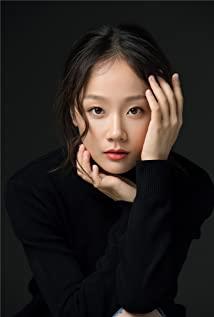The tragic experience of the Jinling people 74 years ago, no matter when and where, as a compatriot, please maintain a heart of empathy. 1. Face the nation's most shameful
scars with "small "seeing" big
, how many centuries does it take to recuperate? How many generations of unforgettable memories are required to finally achieve oblivion? "The
above text is excerpted from chapter 10 of the novel "The Thirteen Hairpins of Jinling" processed for the film, this" tells the story of 13 out of 300,000 "The reason why it is so poignant is that it confronts the historical concept of the "Nanjing Massacre", one of the most distressing, most ashamed, and most depressing themes of the Chinese people, that is, tens of thousands of women were brutally ravaged by the Japanese army.
This topic has been kept secret in both China and Japan for a long time. The reason for this is that China is mainly because of its inexhaustible sense of shame and "sexual psychology", which tends to be conservative. A typical example is Luo Jinmao, an apprentice of the "East China Photo Studio". He kept more than 30 photos of the Japanese army killing Chinese civilians. In fact, he also found that there were many photos of the Japanese army gang-raping and humiliating Chinese women in this horrific film, but he did not keep any of them. He was an expert on the Nanjing Massacre. When asked by a reporter why he did not keep such photos many years later, he admitted that he felt that these photos were very embarrassing to the Chinese at the time... For Japan, the main reason was that sexual violence was the most indefensible among the many atrocities committed by the Japanese army in Nanjing. In the part of denial, women, the elderly, and children have always been the most protected objects in war. In the review of the works of the journalists accompanying the army by the censors of the Japanese Army, Navy, Ministry of Internal Affairs and Intelligence Bureau, the photos of the Japanese army trampling on Chinese women were almost all captured. With the red seal of "no permission", rape was also one of the first crimes that the Japanese military realized during the war, compared to massacres, arson, robbery and other atrocities.
"The Thirteen Hairpins of Jinling" is different from "Blood Certificate in the Massacre", "Nanjing 1937", "Nanjing Nanjing" and other films that attempt to reflect the Nanjing Massacre from an "all-round" perspective. The main line is always "slaughter", and the narrator focuses on the huge concept of "quantity" of 300,000 compatriots killed, and the "sex violence" that occupies the core position in the specific comprehensive concept of "Nanjing Massacre" is because A variety of complex reasons are often brushed aside. "The Thirteen Hairpins of Jinling" started from Yan Geling's original novel of only tens of thousands of words. It is a work from a female perspective or based on the realistic fate of women during the Nanjing Massacre. It does not seek a grand narrative scale and historical facts. Its scene is even just a basement in a church, it just wants to microscopic the darkest page in the history of human beings in the 20th century through the individual fate of "13 out of 300,000".
Uncovering the most painful and humiliating scars of the nation is the courage, strength and value of "The Thirteen Hairpins of Jinling", and also the "progress" of the film and television works themed on the "Nanjing Massacre".
2. Restoring the heroic feelings
of the Kuomintang army against Japan based on historical facts The deeds of the Kuomintang army fighting against Japan in the "frontal battlefield" is a potential hot spot in the current folk research on modern history.
In the eight-year history of the Anti-Japanese War, the evaluation of the "Nanjing Defense War" has always been full of huge controversy. At that time, within the Kuomintang, there was a fierce debate on whether to fight this battle or not. Chiang Kai-shek urgently summoned his staff three times to study countermeasures, and most of the senior generals advocated Abandoning the geographical concept of Nanjing, which belongs to the "Jedi", only Tang Sheng intellectually advocates sticking to the capital. Secondly, the Battle of Nanjing ended in failure. Due to the rapid defeat, the tragic Nanjing Massacre occurred again. Therefore, even within the Kuomintang, there have always been more negative comments than positive affirmations for this battle; again, because the parties involved They all tried their best to avoid talking about the painful history of this nation, especially most of the veterans who participated in this battle were reluctant to talk about their experience of fleeing. In the past, historians often referred to the Battle of Nanjing as the end or ending of the Battle of Songhu. and, rather than a single campaign.
In fact, in the early days of the Anti-Japanese War, under the sacrificial strategy of the Kuomintang army of "exchanging space for time", the Nanjing defense battle was fought extremely vigorously. A lot of Kuomintang soldiers were killed on December 12, which happened to be the day before the fall of Nanjing.
In the original work of Yan Geling's "The Thirteen Hairpins of Jinling", there is basically no description of the tragic battle scene in the Nanjing defense battle, and Dai Tao, the prototype character of Instructor Li (played by Tong Dawei), does not have the marksmanship of "hundred steps through Yang" and the final scene of heroic martyrdom. Yan Geling is good at writing about women, especially in seemingly trivial dialogues, where a few strokes can liven up a woman's mind. I agree with an opinion that "The Thirteen Hairpins of Jinling" can have no war scenes. This is not the original author's intention. Yan Geling is not researching the historical facts and the whole picture of the Nanjing Massacre, and "The Thirteen Hairpins of Jinling" is not the Nanjing Massacre. A diary of , its focus is to touch the sublimation of humanity in this disaster from the perspective of women and fate.
But I understand the consideration of adding war scenes to the movie "The Thirteen Hairpins of Jinling", especially the screenwriter and director gave a very accurate and fair image of the Chinese Kuomintang soldiers in this battle after referring to a large number of historical materials of the Nanjing defense battle. Nanjing in 1937 was by no means only retreat and humiliation. The bloody battles that took place in Chunhua Town, Guanghuamen, Zijinshan, Zhonghuamen, Saigong Bridge and other places were all earth-shattering. However, in this tragic "mistake", the individual soldiers who defended the country with their flesh and blood are still worthy of respect and praise. The narration of the film by Shujuan tells how much the soldiers of the poorly equipped national army used huge sacrifices to fight with the armored weapons of the Japanese army. This is by no means sensational or exaggerated. As the saying goes, every inch of mountains and rivers counts for an inch of blood. During the eight years of the Anti-Japanese War, especially in the early days of the Anti-Japanese War, we cannot evaluate the success and failure of many battles with the idea of winning and losing.
The movie "The Thirteen Hairpins of Jinling" feels more powerful than the novel "The Thirteen Hairpins of Jinling". A key point is that the film is based on historical facts and extracts the image of the brave and fearless national army during the Nanjing Defense War. Our descendants, this blooming wounded flower is a treasure of the nation.
3. The manifestation of sexual violence against the Japanese army.
In a report to the Ministry of Foreign Affairs dated January 15, 1938, Rosen, the political secretary of the Nanjing Office of the German Embassy in China, held that: "The Japanese army's abuse and rape of women and young girls is an He has erected a monument to shame."
In fact, in the post-war Tokyo Trial and a large number of Western media reports, the term "Nanjing Massacre" has not been used, but the "Nanjing Rape Incident", a tragic incident that killed more than 300,000 people, no need for it." massacre” and called it the “rape incident”, which is enough to imagine the characterization of the Nanjing incident at that time and the scourge of women in the Nanjing incident. Even if it is confirmed from statistics, the term "Nanjing Rape Incident" is by no means exaggerated. According to the International Military Tribunal for the Far East, 20,000 Chinese women were raped within one month after the Japanese army entered Nanjing City. According to statistics from international sources in the "safe zone", at least 80,000 women were raped in Nanjing. In fact, anyone with a little common sense knows that such a figure can only be a minimum estimate, and at least a large number of women who committed suicide because they refused to be humiliated and who have been humiliated for understandable reasons have been left out in this statistical category. silent women. There is a sentence in the verdict of the Tokyo Trial that deserves attention: "In the whole city of (Nanjing), the vast majority of young girls and old women were raped."
Focus on the Japanese army targeting female prisoners in Nanjing The heinous crimes committed here are a necessary interpretation of the "Nanjing Massacre". This is by no means "picking" or "getting the attention of female compatriots", nor is it inciting narrow-minded nationalism. As long as you have a little understanding of the history of the "Nanjing Massacre", you will find that "sexual violence" is the most unavoidable and should not be avoided.
Since the brutality of the Japanese military's sexual atrocities is unheard of in ancient and modern times, it is difficult for the film to focus on this theme in terms of expression. Specifically, it must be realistic, but not too bloody and naked. In the performance of the details of sexual assault, restraint and condensed language must be maintained. In "The Thirteen Hairpins of Jinling", there are two scenes showing the sexual violence of the Japanese army, one in the church and the other in the attic by the Qinhuai River. In both scenes, the director used sharp, cold, psychologically oppressive The language of the shots highlights the collective madness of the Japanese army, and its group of chasing and filming shots is worthy of master-level standards. Most importantly, these two scenes show that Zhang Yimou's ability to control the camera and the ability to schedule the scene is very strong, almost Not a single shot is superfluous or excessive. It not only makes the viewer feel the brutality, perversion and bloodshed of the Japanese army, but also does not contaminate the disadvantages of vulgarity, stereotype and kitsch. It is the highest level of domestic directors. Lu Chuan's scenes involving Japanese military sexual atrocities in "Nanjing Nanjing" appear much more often than in "The Thirteen Hairpins of Jinling", but they cannot be compared with the strength of "The Thirteen Hairpins of Jinling" in dealing with similar scenes. This is the director's skill. Deep expression.
4. A very suggestive ending
In Yan Geling's novel, the final destination of the "Thirteen Hairpins" is extremely tragic, Yu Mo is the only one who survived, and the rest were gang-raped by the Japanese army at the so-called "celebration party" (rejected). The traitor was beaten to death on the spot) and served as a comfort woman for a long time, and finally died in the "comfort station" with hatred. Even Yumo who survived was humiliated, so she chose plastic surgery after the war. Compared with the straightforward narrative of the original book, or "no room left", the ending of the movie "The Thirteen Hairpins of Jinling" is more flexible. This is an "open" ending. I thought the director would be able to escape the city of Nanjing in a truck while the female students Interspersed with the scenes of the encounter with the "Thirteen Hairpins" at the "Celebration Reception", that is, giving a clear answer to the ending of the "Thirteen Hairpins" like a novel, but the director did not do so. Looking at the entire ending of the movie, you will find the director's choice. Reasonableness and excellent control of the script.
The whole film of "The Thirteen Hairpins of Jinling" is extremely depressing and heavy. The most painful scene in the whole film reached its limit when Cardamom was gang-raped and murdered by the Japanese army. After this scene, Zhang Yimou has been "receiving", although the "Thirteen Hairpins" replaced The female student's "going to death" is the core and climax of the whole play, but in the performance of this ending, the film has always used the warmth and sublimation of "before death" to contrast, implying the cruel ending of "going to death", even Yumo. The "ceremonial" first night with Miller also revealed the cruelty of this "last night" through the mouth of Yumo. The film uses more space to show the scenes of "Thirteen Hairpins" makeup, preparation, inner entanglement, saying goodbye to female students, and being "escorted" to the car by the Japanese army in turn. The invaders' "celebration party" singing was cruel enough (the line that Miller rejected the invitation of Hasegawa), not to mention this was a "virgin feast" that the Japanese army had planned for a long time. It can be said that the details of the film's blank space for the ending are very in place and refined, and it has the charm of "no word, but full of romance" in the poetry of the prosperous Tang Dynasty.
The end of "The Thirteen Hairpins of Jinling" does not play tricks or pretend to be eloquent, nor does it "understand" the self-reflection of Japanese soldiers in a whimsical way like the end of "Nanjing Nanjing". The ending of "The Thirteen Hairpins of Jinling" was left blank, which is one of the most beautiful "finishing" in the history of Chinese film, and one of the most emotionally depressing endings in the history of film. Thoughtful, mindful, and most importantly, it does not overinterpret historical truths or superfluous refinements.
5. The priest turned mortician. The most wonderful adaptation of the
film made the most drastic action of the original, turning the over half-hundred-year-old priest Ingman into a young American mortician-John Miller, who has read the novel before Watching the movie, you will find that the screenwriter's knife is very exciting, and it is even better than the characterization of Yan Geling's original work.
First of all, this knife avoids a lot of religious issues. China is an atheist country. Although Christian believers continue to grow, it is still a bit nondescript to popularize Christian teachings in such a movie, and it is not easy to pass censorship. The character of John Miller has not been a "tall, big and full" image since he appeared on the stage. His smooth, snobbish, lustful and lecherous leaves are basically a "negative image", but such an image is also very realistic. It also leaves enough room for tension for the later changes in human nature with the deepening of the plot. In Nanjing in 1937, not every foreigner was a "living Bodhisattva" like Rabe or Waitlin. Among them, people like John Miller's friend Terry scrambled to escape before Nanjing fell. Historical records The names that come down and are commended are always very few individuals, and the image of John Miller is created using a "transformation" method, although this method is not new, but it is indeed better than a priest gushing out there. Preaching is more conducive to the acceptance of the film by the audience.
The most brilliant is the "professional" arrangement of John Miller's character - the mortician. Even in peaceful times, this profession gives people the breath of death, not to mention that he appeared in Nanjing in 1937. It is said that doctors are not afraid of seeing blood, because they are used to seeing blood. According to this logic, morticians should not be afraid of the dead. But the ubiquitous death and tortured corpses in Nanjing completely changed John Miller's life. This change is similar to Meng Shujuan's confession in the original novel, "My whole life was changed by seven days in December 1937." In the same line, it was the experience of women after the Nanjing City was broken in 1937 that made the priest clothes worn by John Miller no longer a "disguised" amulet. In the final scene of cutting hair and makeup for "Thirteen Hairpins", you will feel more and more that characterizing John Miller's profession as a "mortician" is as wonderful as the whole film's smart dialogue. He used to give "dead people" lying flat. Makeup, not accustomed to putting makeup on living people, this quite reasonable plot design makes the whole process of John Miller's haircut and makeup for "Thirteen Hairpin" highly suggestive, it is more like a living person's "farewell to the body" ", or in other words, for the thirteen girls who made a death appointment for the students to restore the original appearance of their lives before they died, the "Thirteen Hairpins" lying side by side in the basement bunks took turns waiting for John Miller to put on makeup. A classic shot of the whole film, its full of human light and aesthetic art is no less than the little girl in red who suddenly appeared in black and white film in "Schindler's List".
6. The expansion of the narrative angle of the Nanjing Massacre
There are already a lot of film and television works that tell the history of the Nanjing Massacre, but it is not difficult to find that one of the most prominent problems in the context of the "quantity" is that the angle of telling this history is relatively stereotyped and single. The three major deficiencies are mainly as follows: 1. The film focuses on the period after the Jinling City was broken on December 13, 1937. This was the most violent period of the massacre, and it was also the most easily overlooked period for many perspectives, because the brutality had already been Covers everything; 2. Most of the films are cut from the perspective of records left by foreigners, and even directly show what the foreigner did in Nanjing and the content related to the "international security zone". The substantive contact of the people, the serious lack of historical data, and the fact that most of the parties involved have passed away make it very difficult to solve this problem; 3. The concept of "massacre" is too narrowly understood, and the subject of "comfort women" in "Nanjing Nanjing" has already been Considered a major breakthrough, in fact, the heinous crimes committed by the Japanese invaders in Nanjing were more than the destruction of human life and the humiliation of women. The "Nanjing Massacre" is an extremely complex and comprehensive concept. From December 1937 to 1945 Japan Before the surrender, very few works paid attention to Jinling's survival under the iron shoes of militarism.
At the beginning of this year, I visited the Memorial Hall of the Victims of the Nanjing Massacre by the Japanese Invaders. The two signs of the memorial hall caught my attention. I think there are many things that are debatable. One is the entrance of the memorial hall. "Class Scenic Spot", one is the Nanjing Massacre marked on the huge cross in the center of the memorial hall and ends on "1937.12-1938.1". For the former, I think the memorial hall lacks a basic understanding of its own nature. If the memorial hall of the compatriots killed in the Nanjing Massacre can be called a "scenic area" and also participate in a "rating", then such a "commemoration" is really good for the spirit of the deceased compatriots in the sky. blasphemy. The latter, I think, is because the Memorial Hall's conception of the time of the Nanjing Massacre is too conservative, and the American missionary Peters especially reminded the world when he testified in the Tokyo Trial: "From February 6, 7, 1938 until that summer, many serious incidents occurred. The atrocities are still happening." To be precise, the end of the "Nanjing Massacre" concept of time should never be January 1938.
The concept of time in the story of "The Thirteen Hairpins of Jinling" is a hidden line. It is not revealed, but there are traces to be found. Those who are familiar with that period of history can tell that the story actually happened in the days when the city of Nanjing was broken and Ishigen Matsui entered the city. Inside. The contribution of "The Thirteen Hairpins of Jinling" is to expand the expressive space and depth of the history of the Nanjing Massacre. It focuses the main body of the camera on the fate of a group of dusty women, rather than the middle and high-end figures in the society at that time. breakthrough". Secondly, the small concept of "13/300,000" in the film also enlightens the latecomers. The Nanjing Massacre should not always be aimed at "300,000 people", but can be aimed at a few people. Even 1 person. For example, in several films about the Nanjing Massacre, the characters of traitors appeared. During the period when the Japanese and puppets ruled Nanjing, there is still a lot of room for such characters and the ups and downs of human nature intertwined in the destruction of the country and the family; Furthermore, we should not let go of some important historical clues. The sins of Japanese militarism in China were not limited to the massacre of Nanjing. According to historical records, during the period of the Japanese and puppet rule of Nanjing, the sale of opium was legalized again, and many of the opium sales were legalized by the Japanese army. In order to survive, the gang-raped women had to go door-to-door to sell opium for the Japanese army to make money. Details such as these constitute the whole essence of Japanese militarism's "subjugation of China" black heart. If these stories based on historical facts are absorbed and utilized by the film script, it will greatly help the Chinese people to understand the whole picture of Jinling's painful history and expand the depth and breadth of their vision.
Only one "The Thirteen Hairpins of Jinling" is not enough. Our cinema needs more epics that can wake up the nation. Our cinema should not be occupied by those "Xia" made by Americans, and restore the painful history of Jinling. More 300,000th stories are needed.
View more about The Flowers of War reviews










